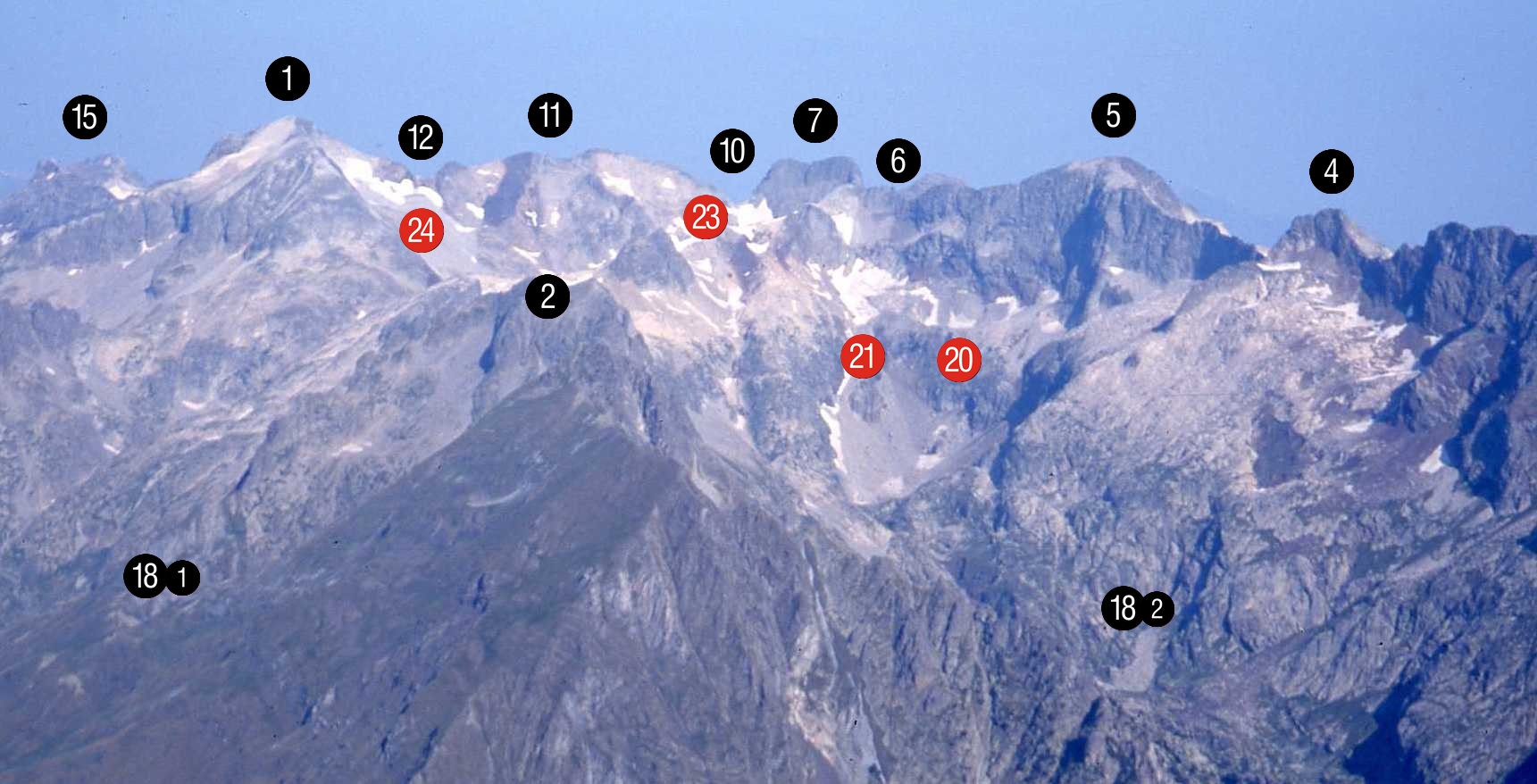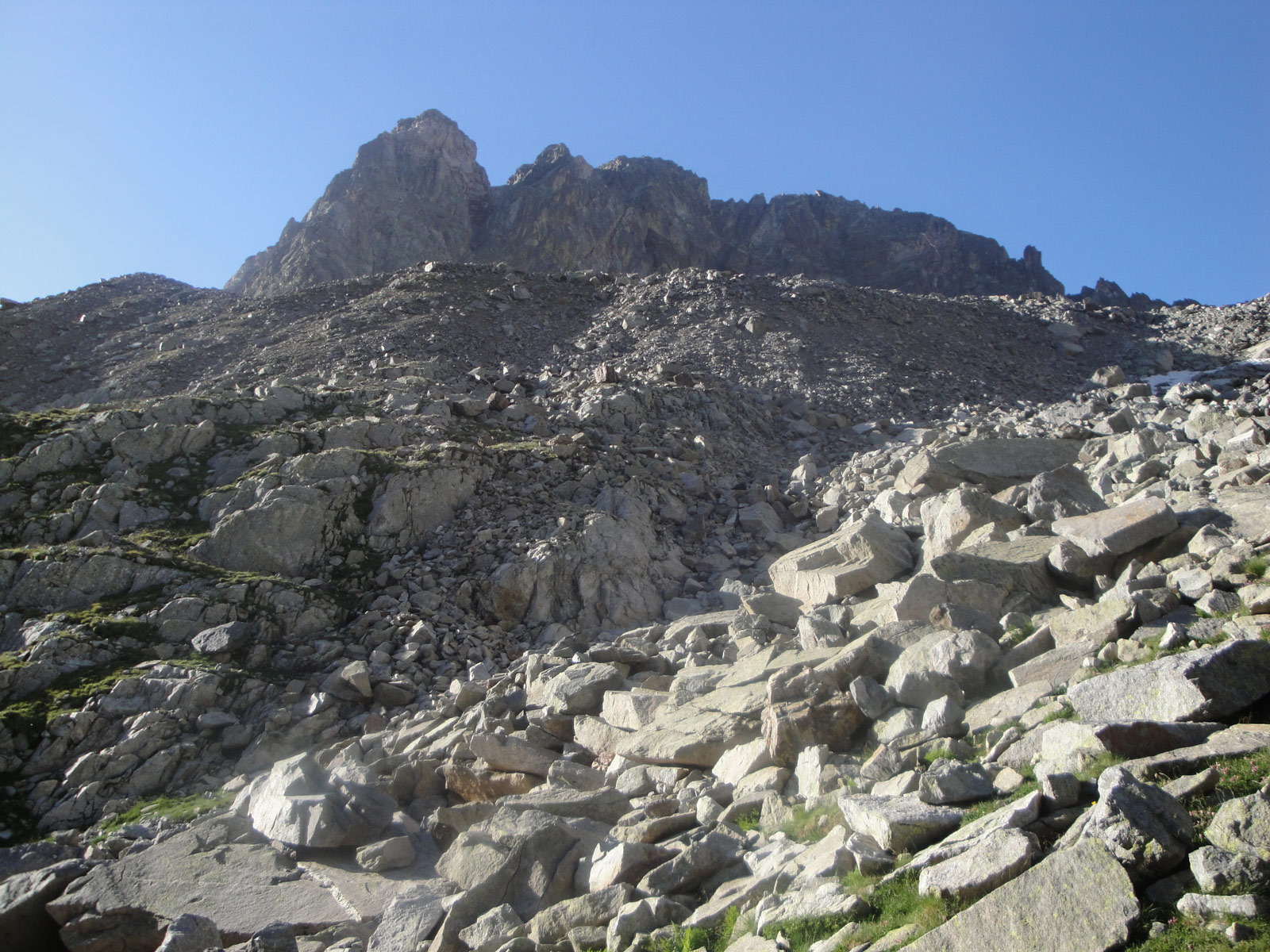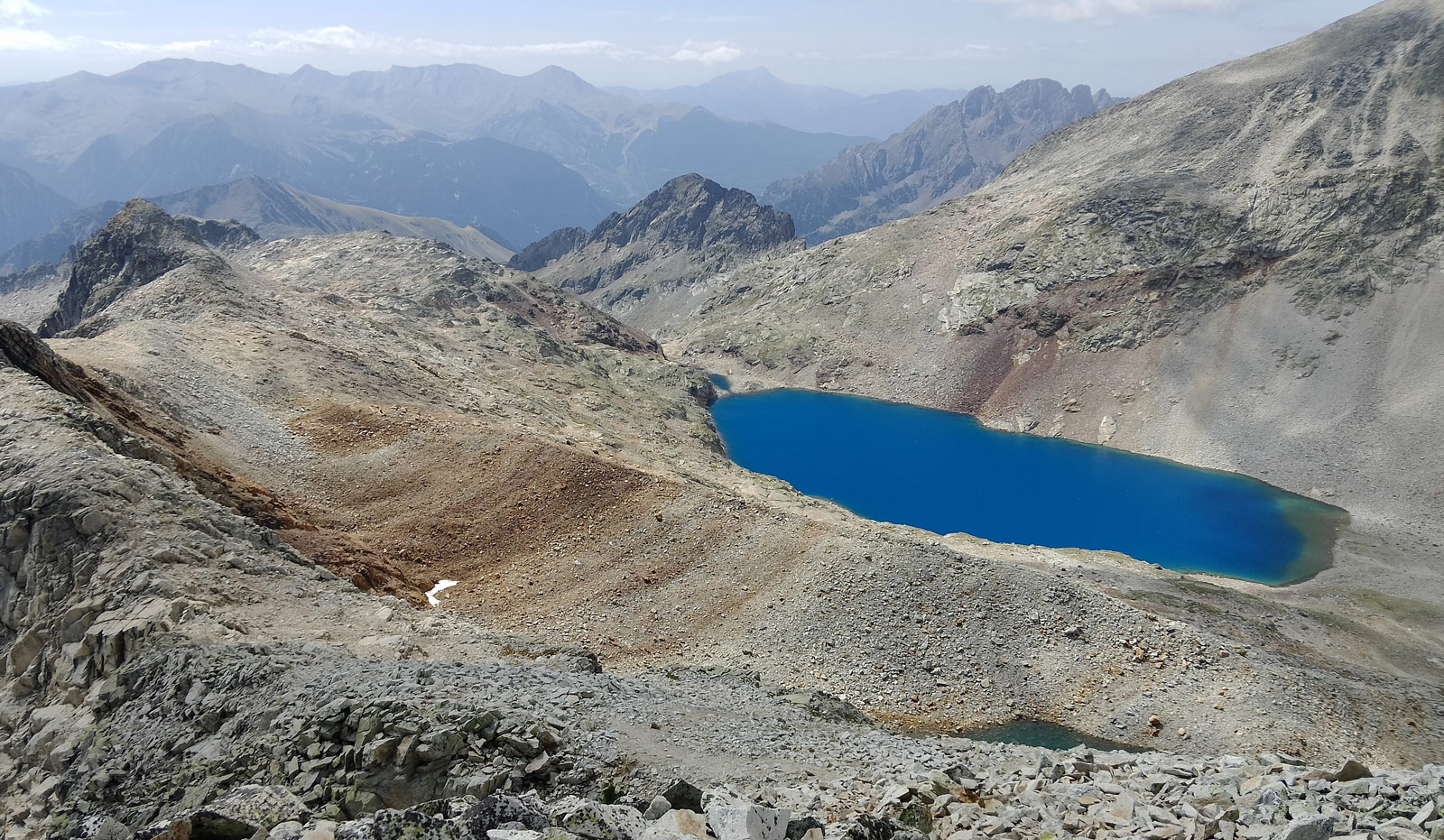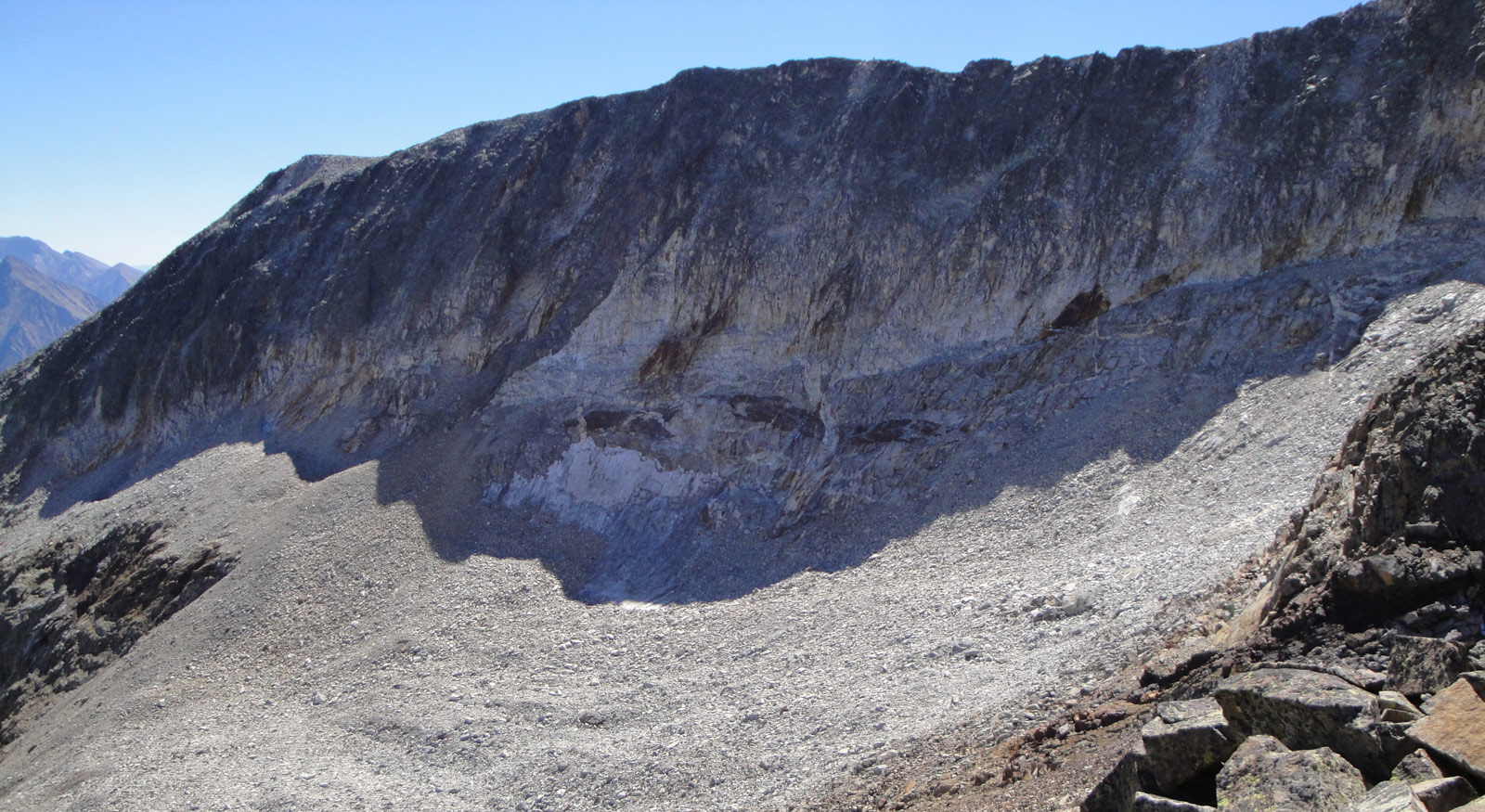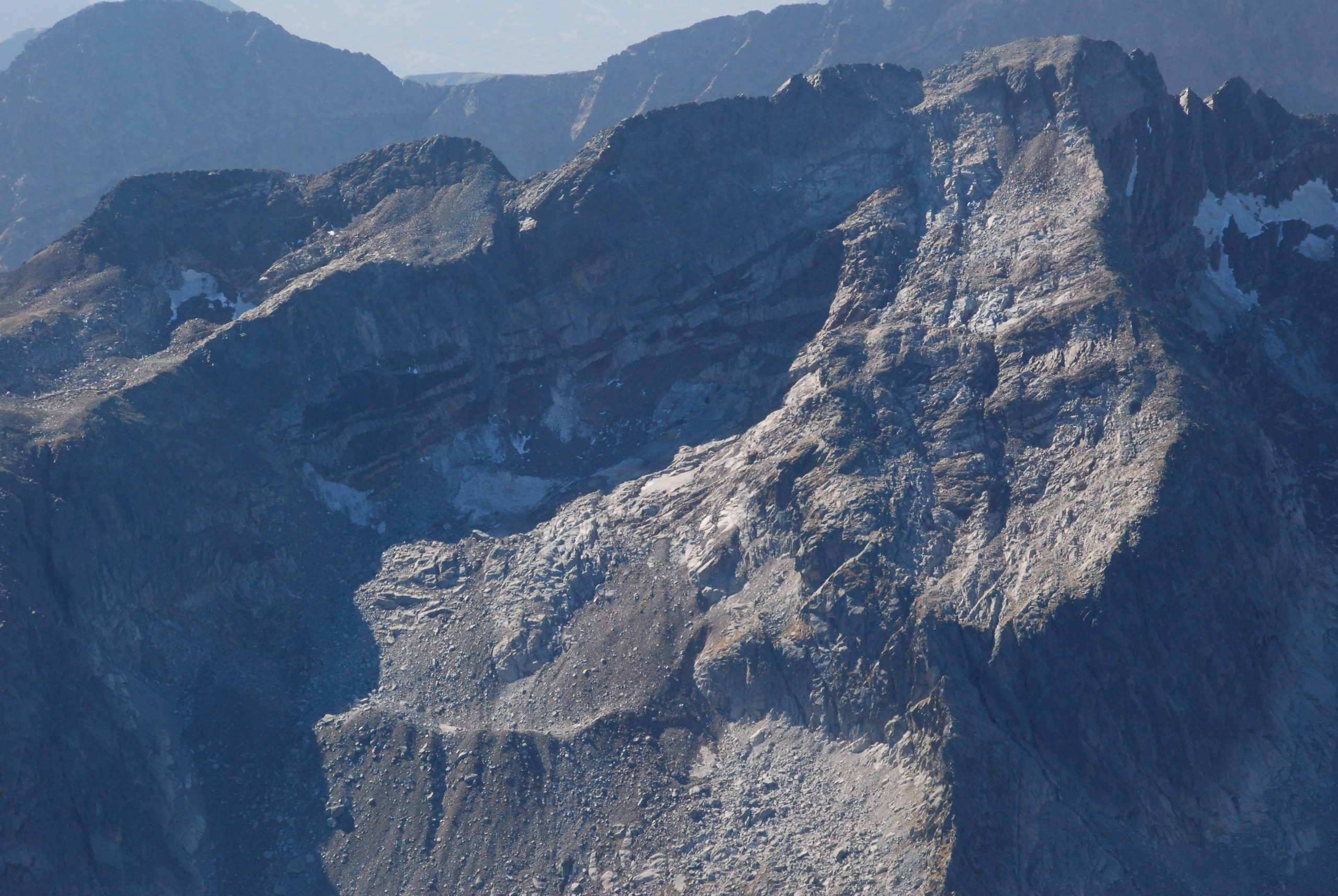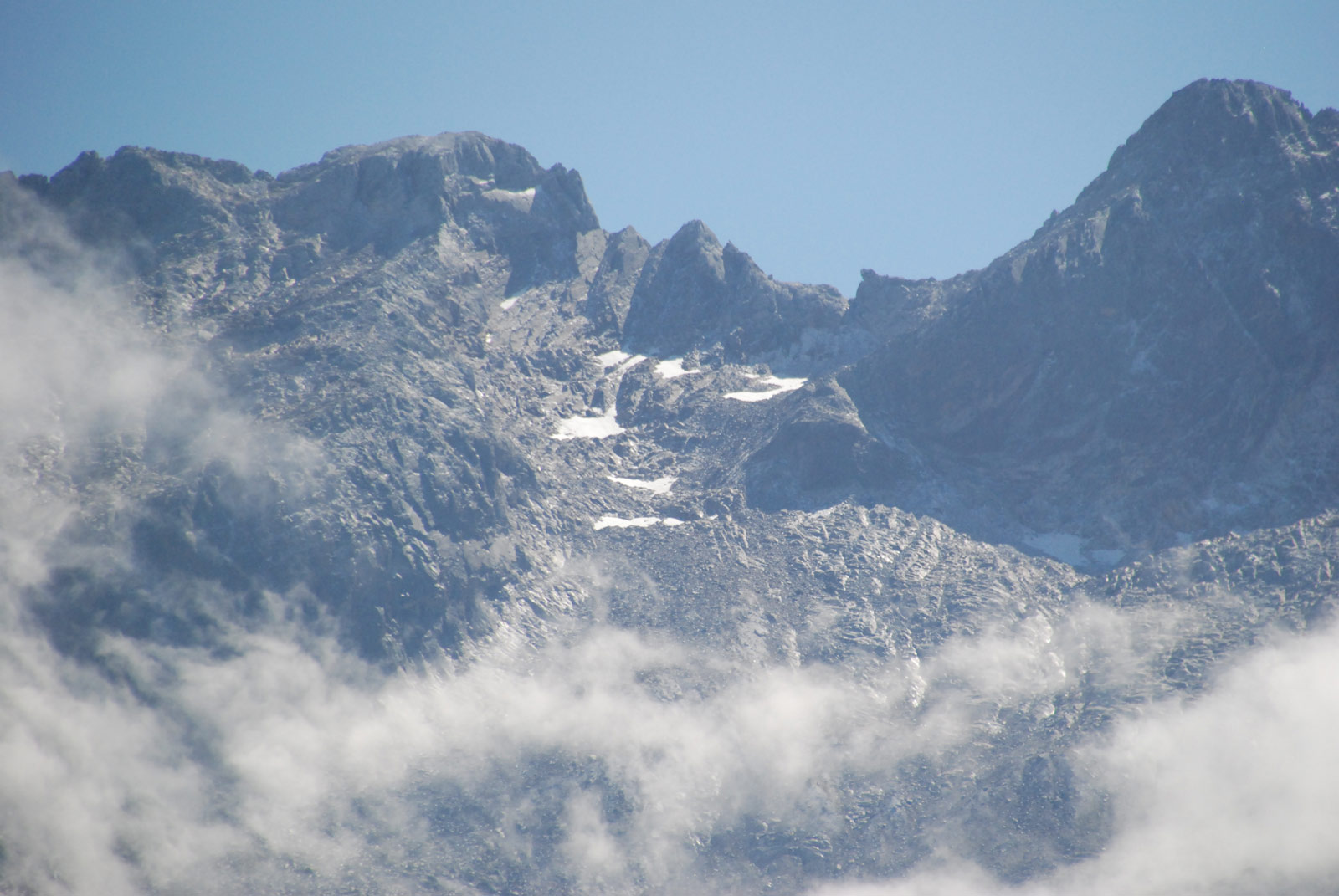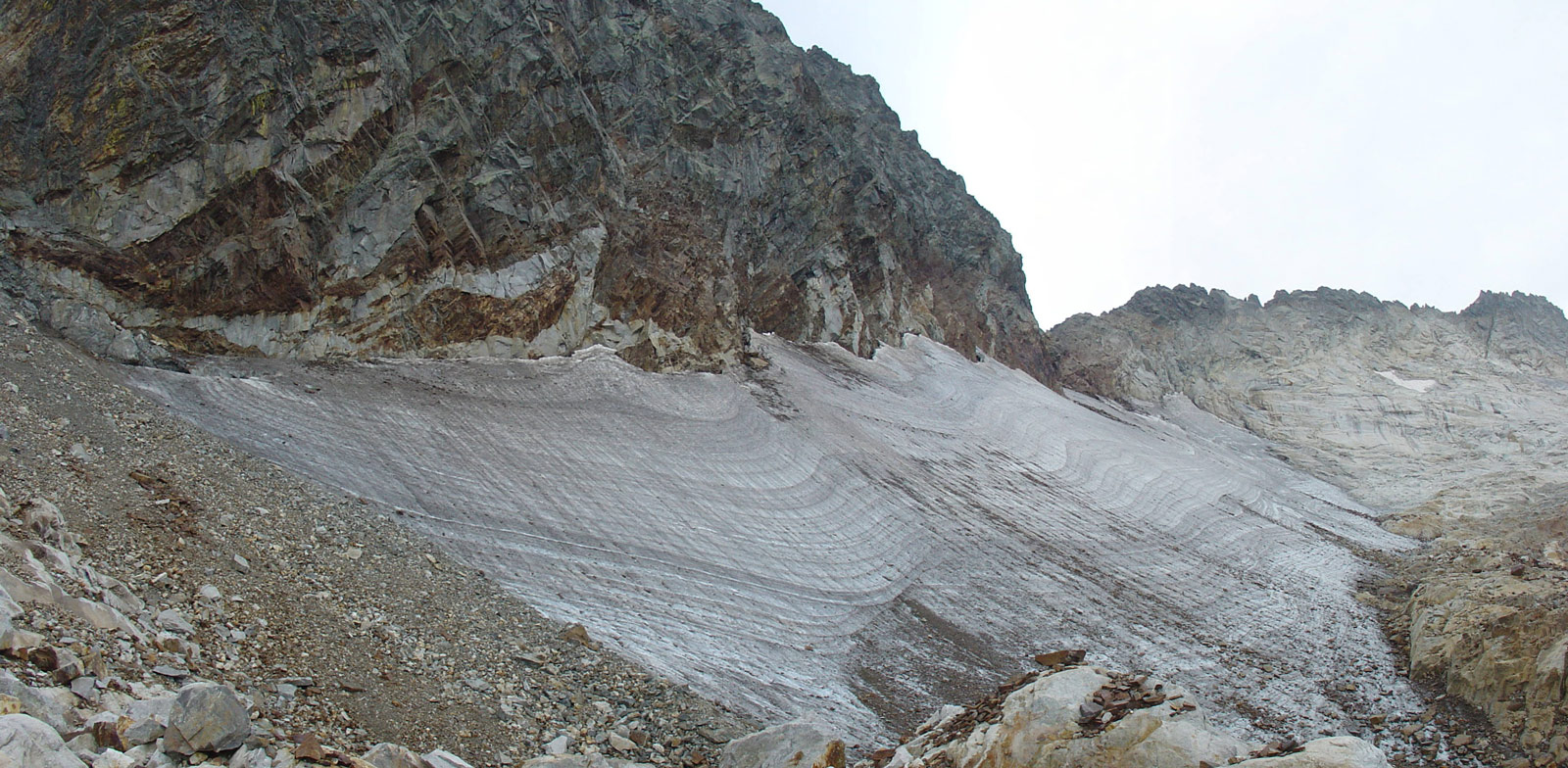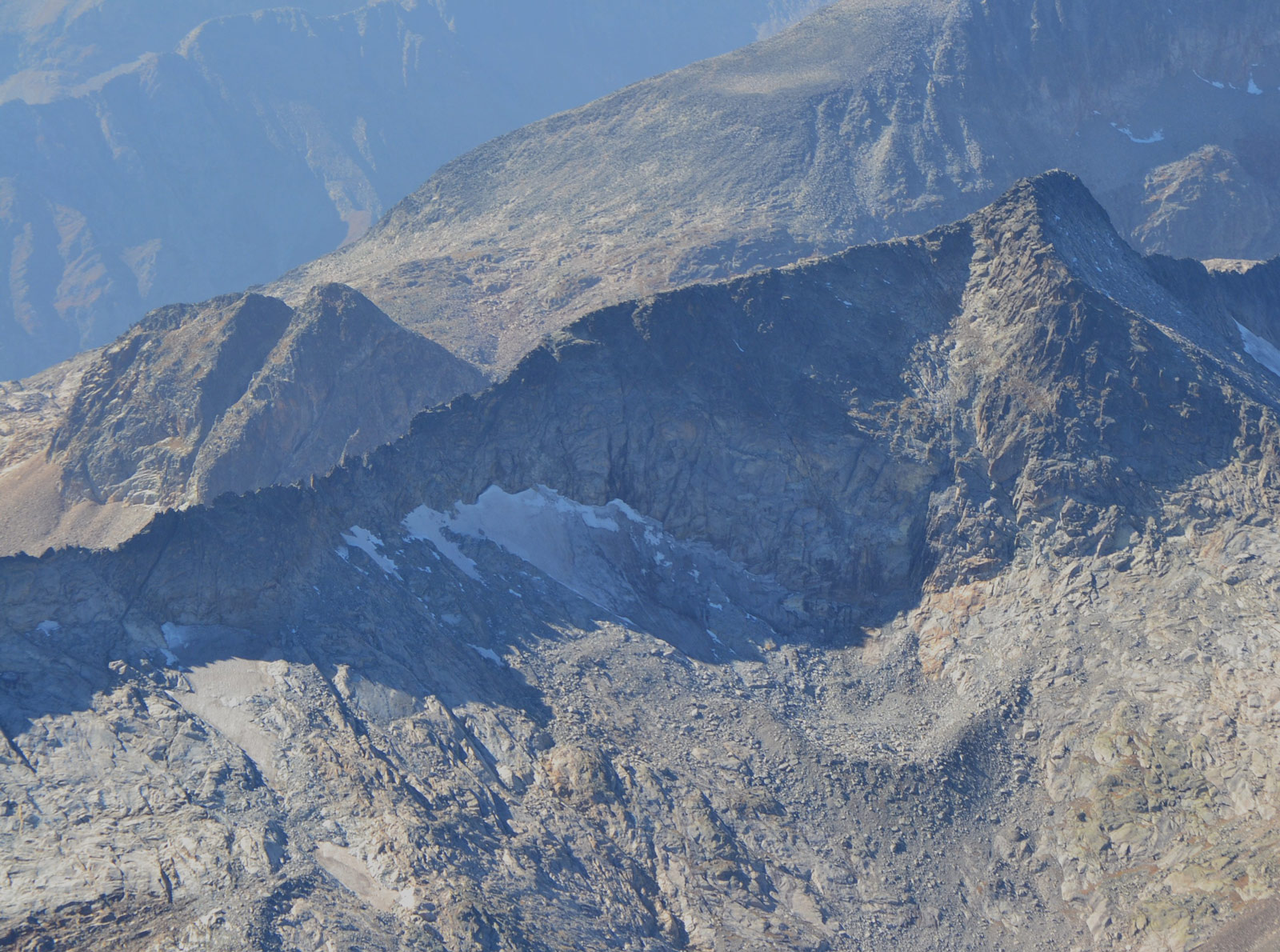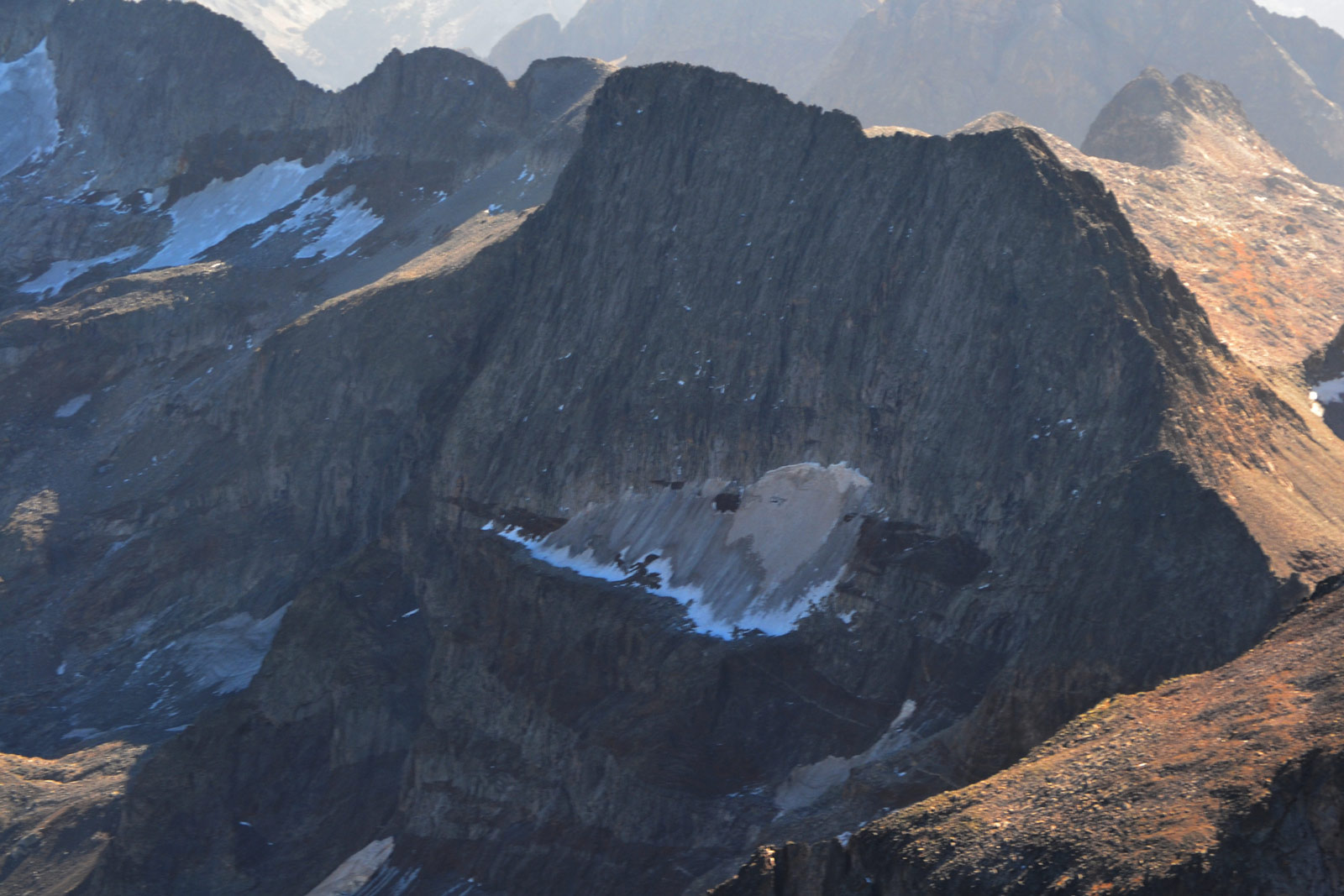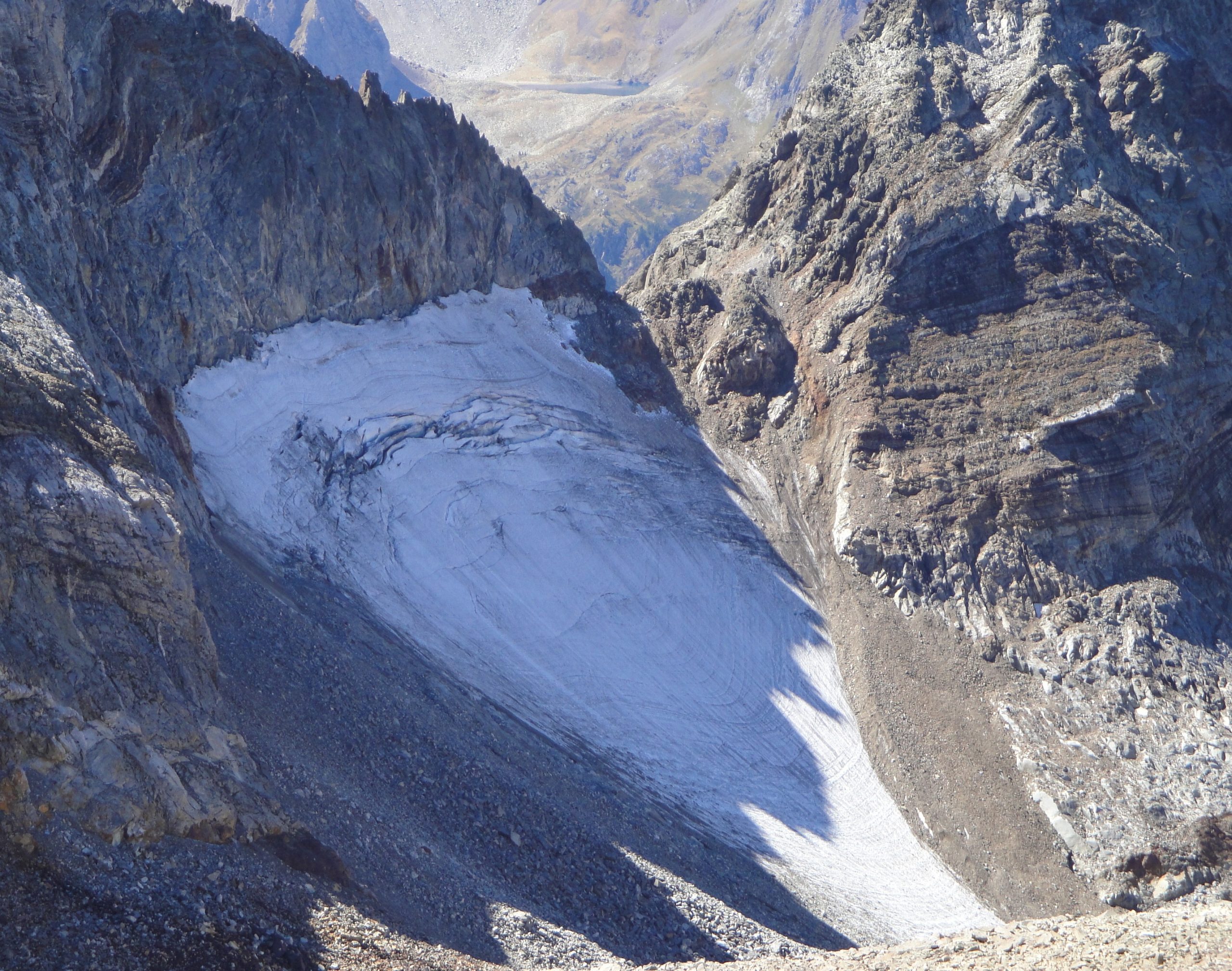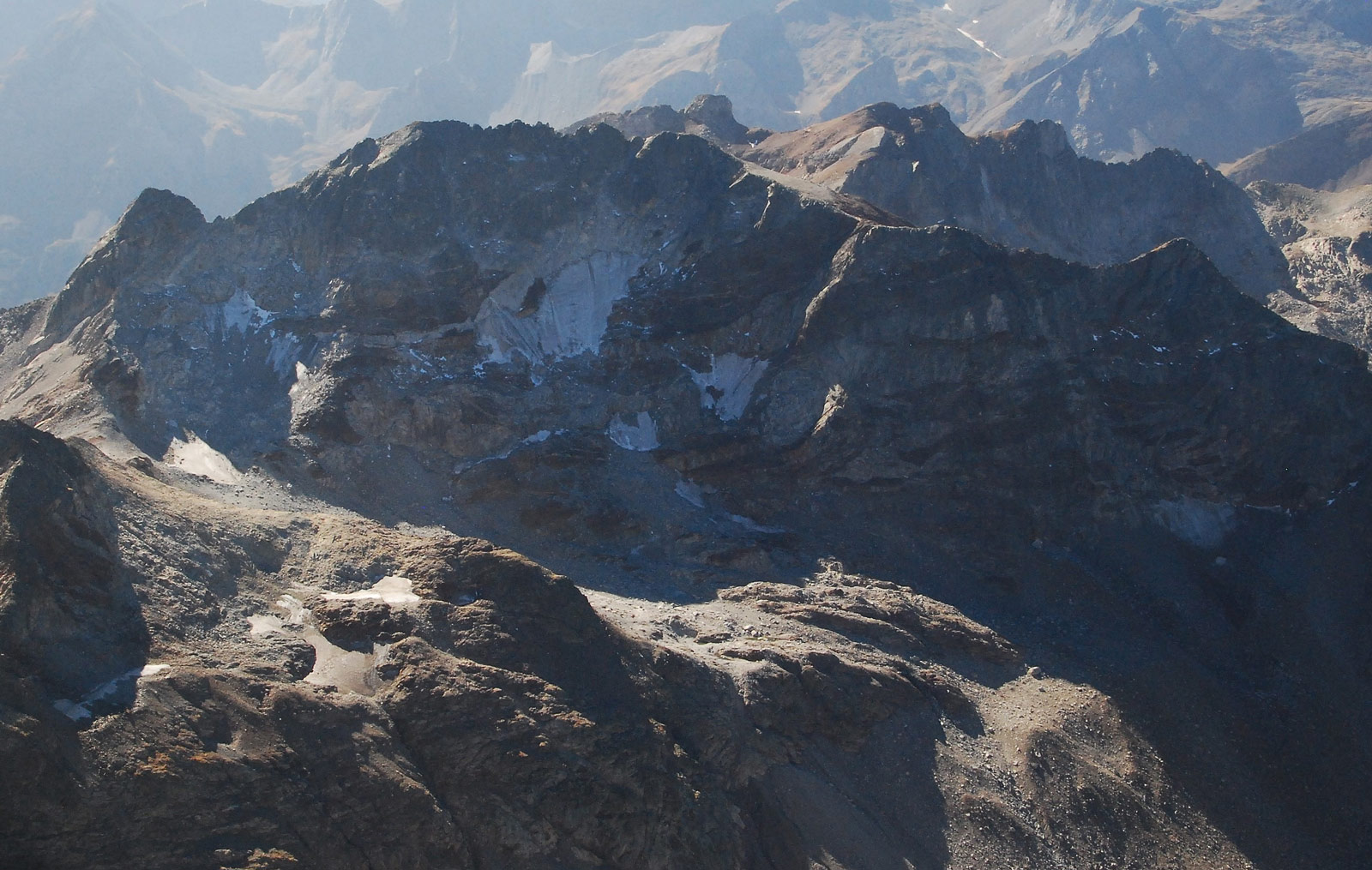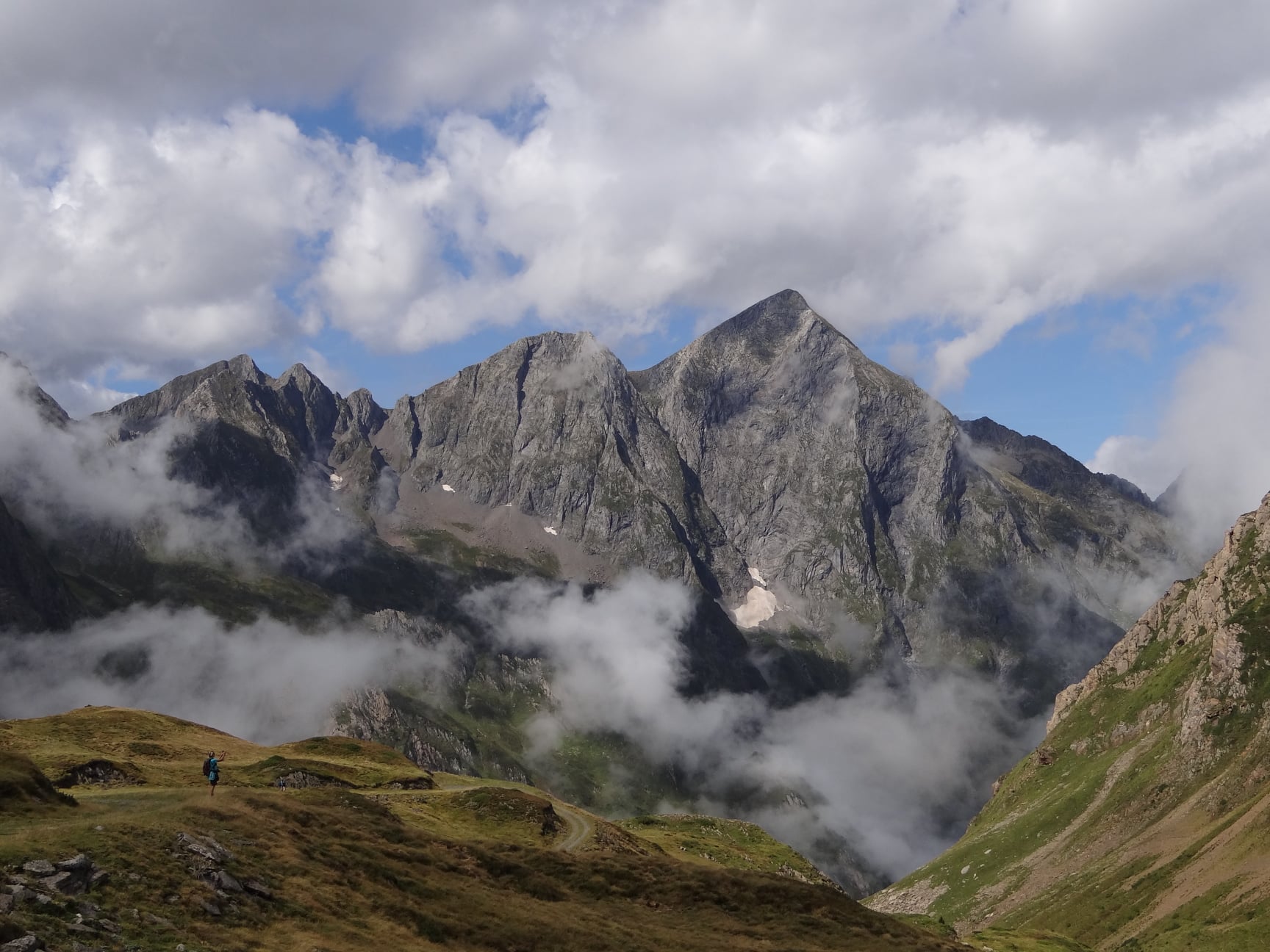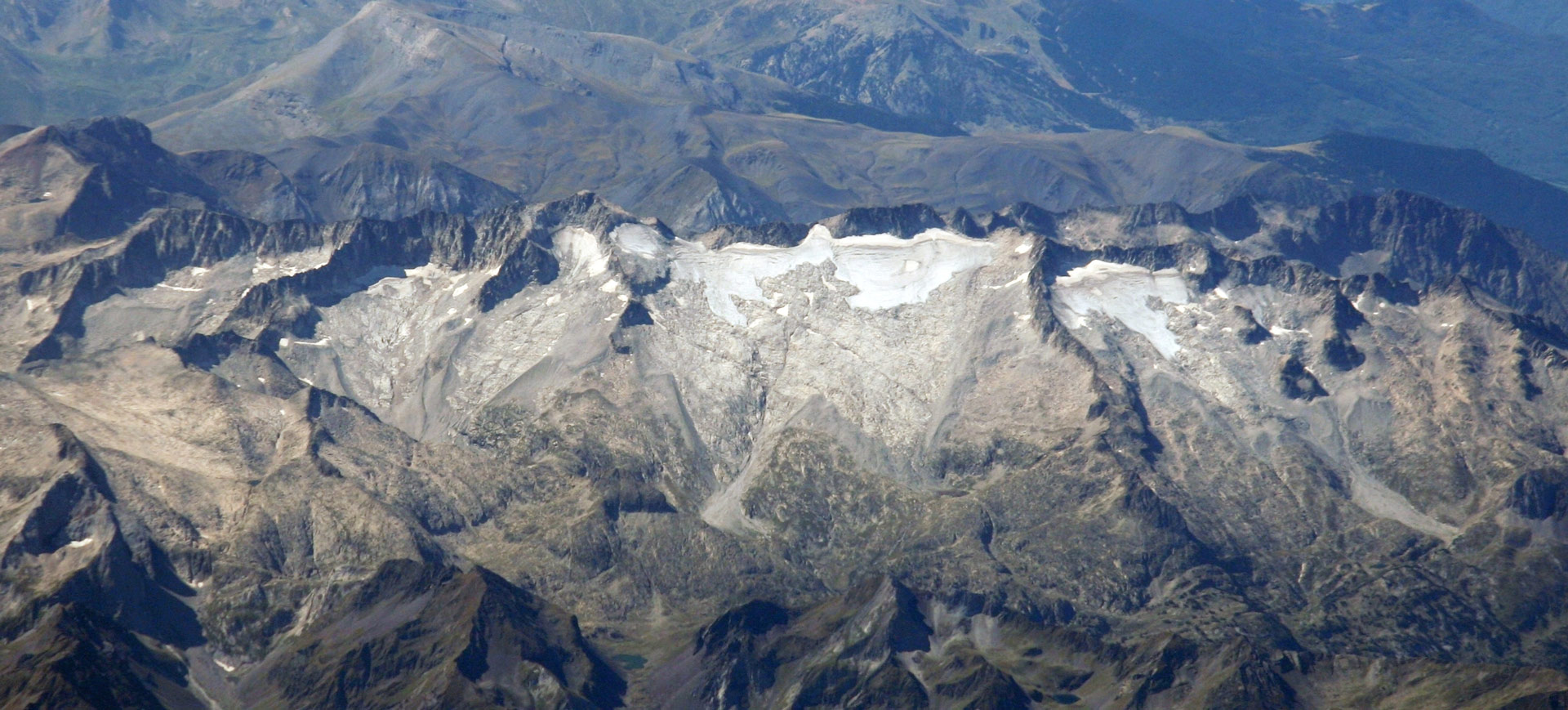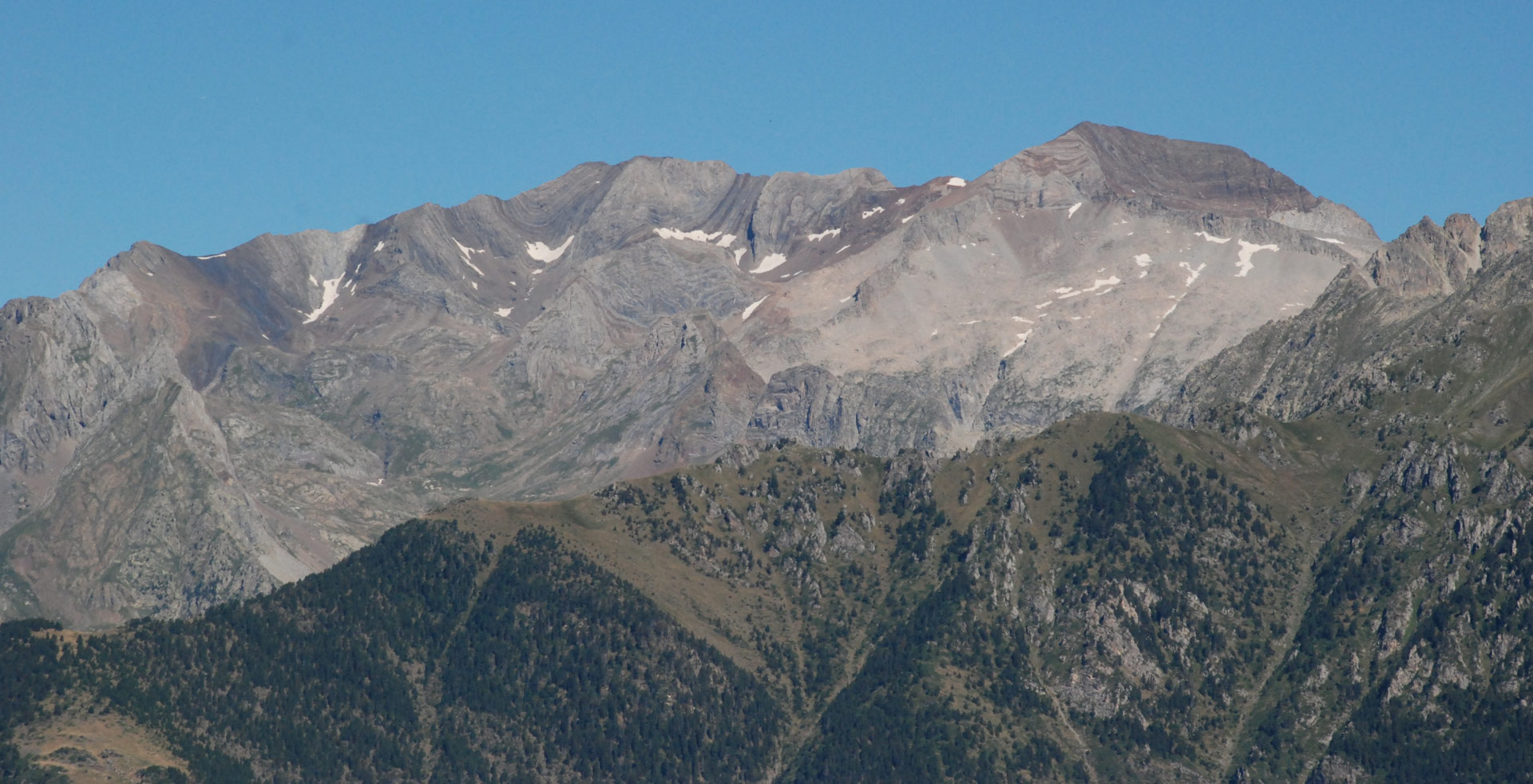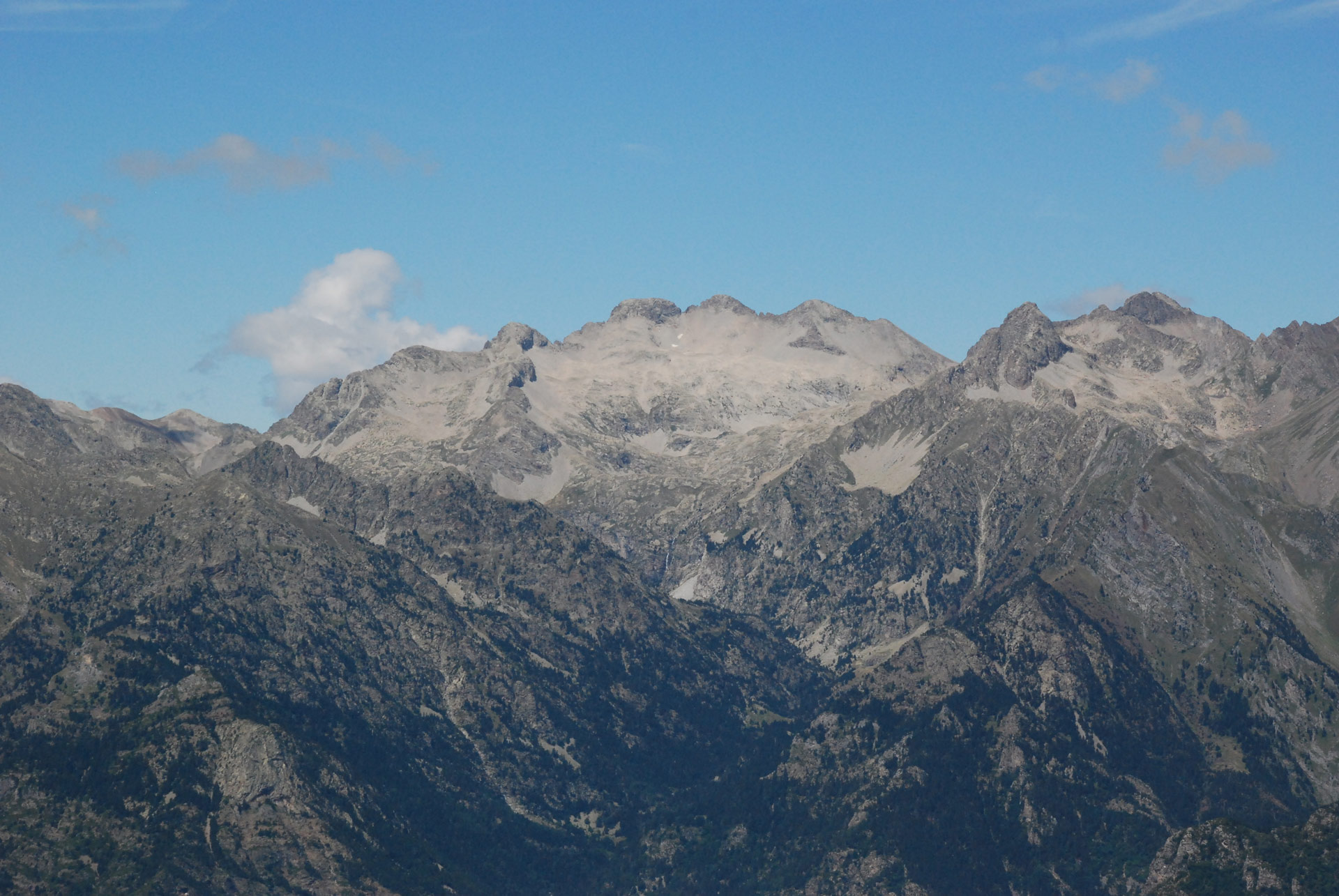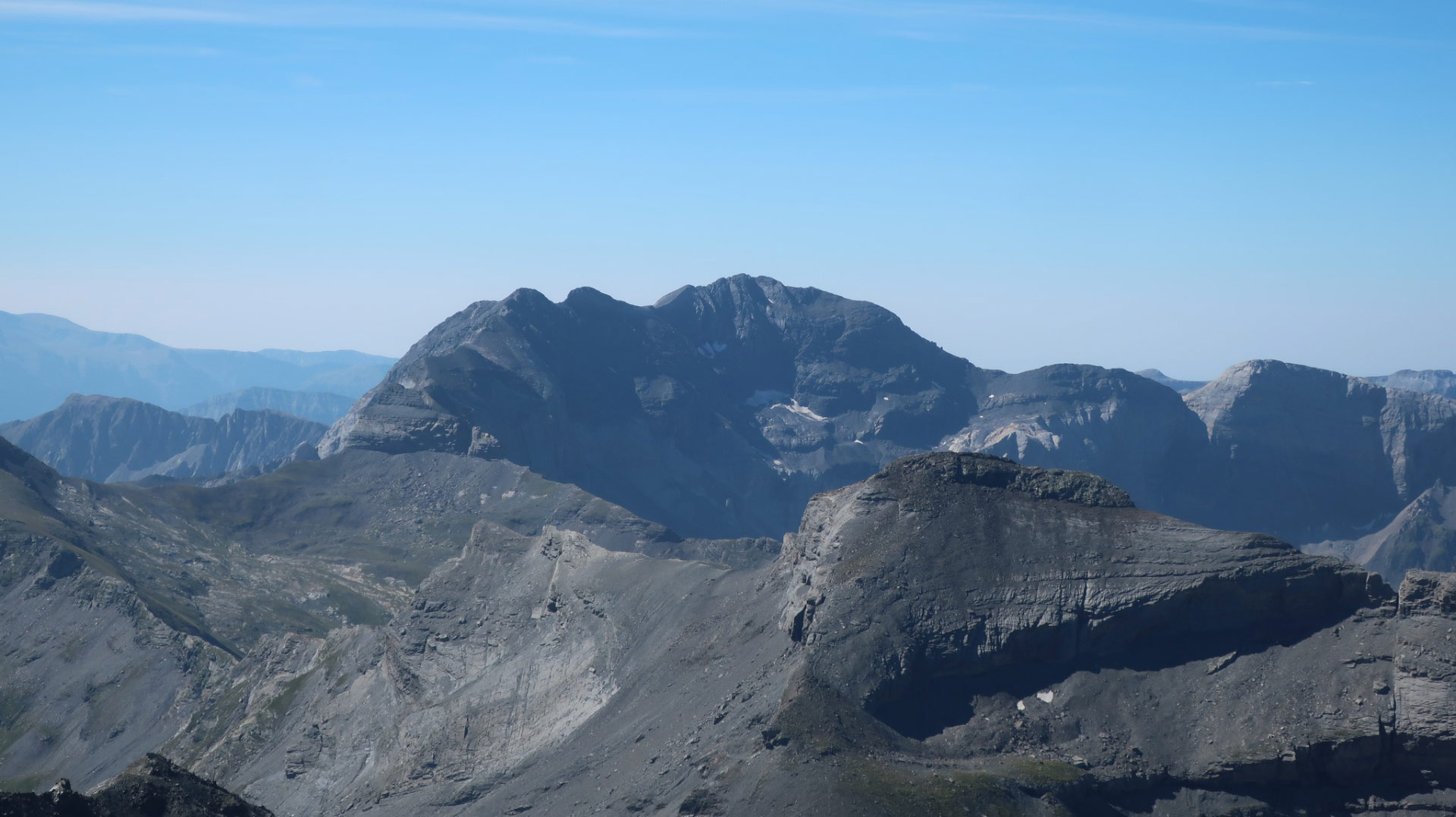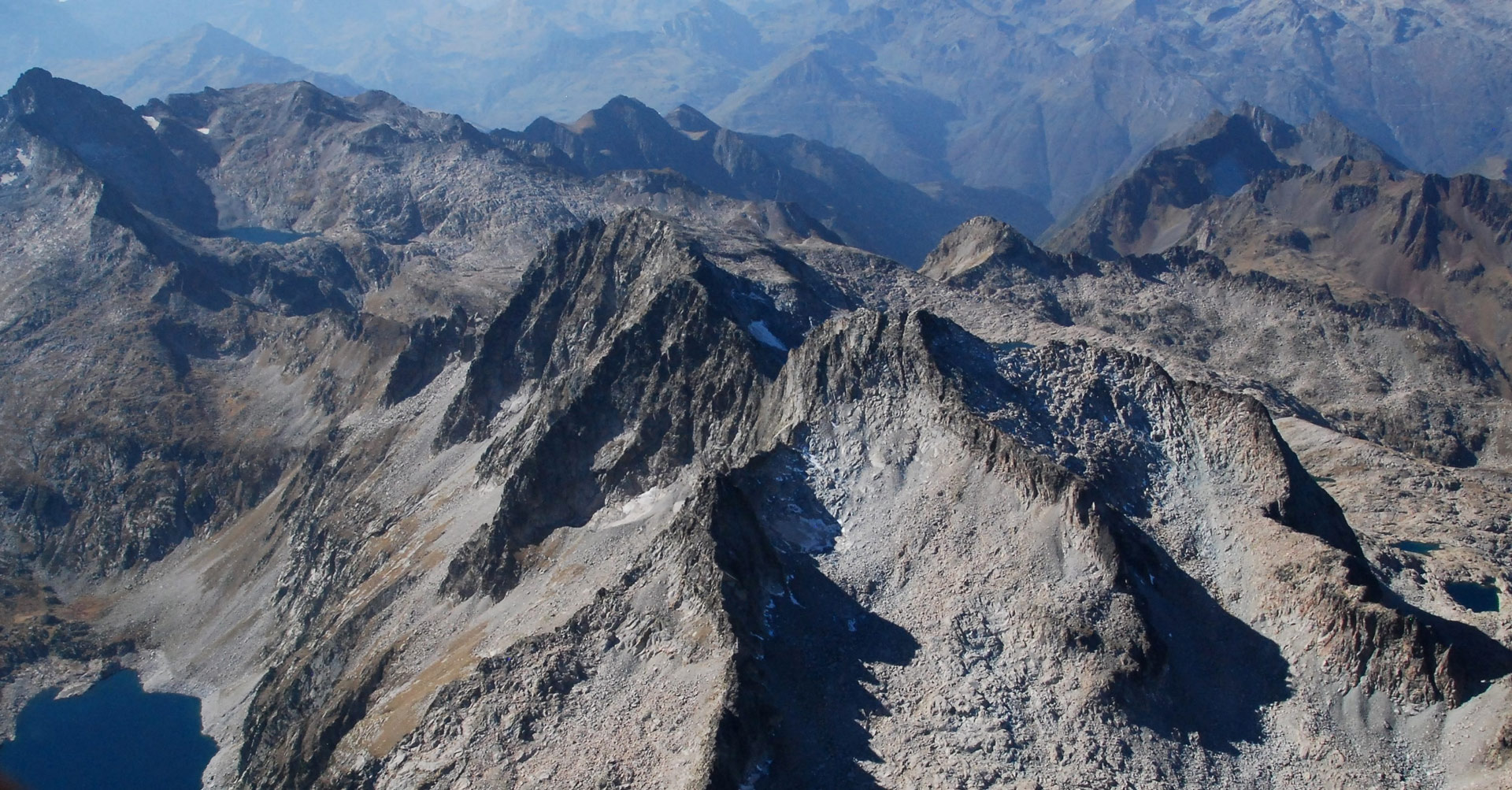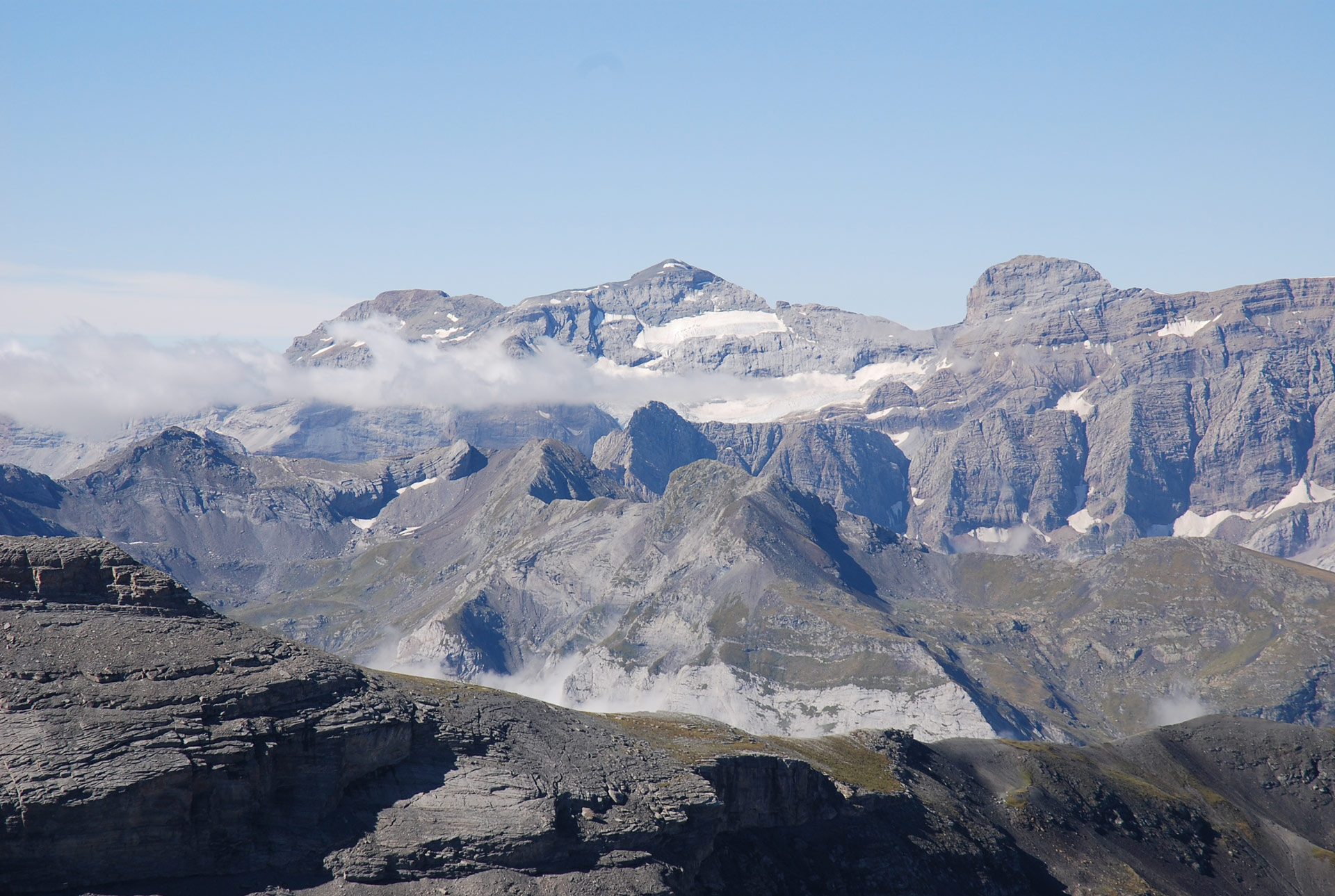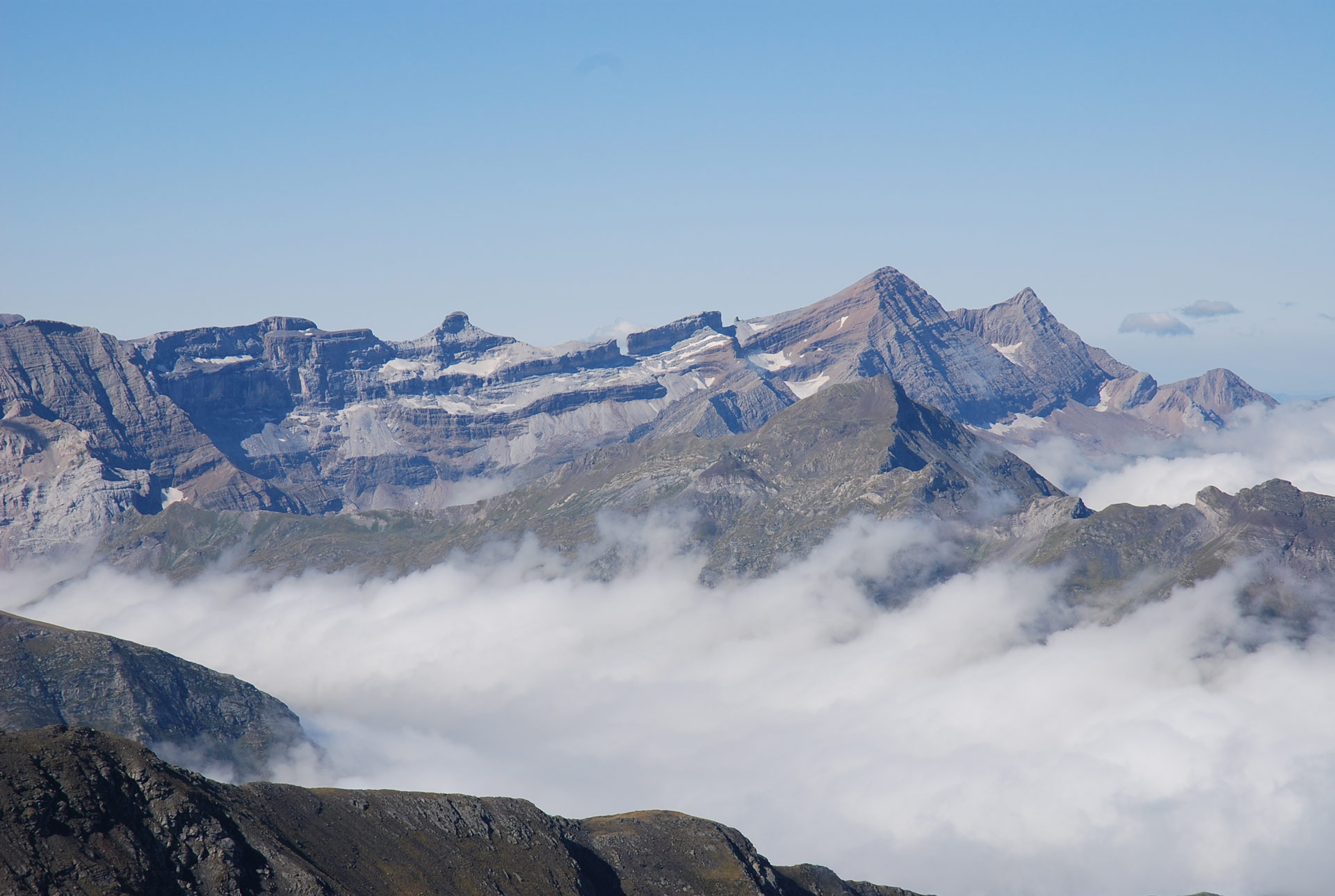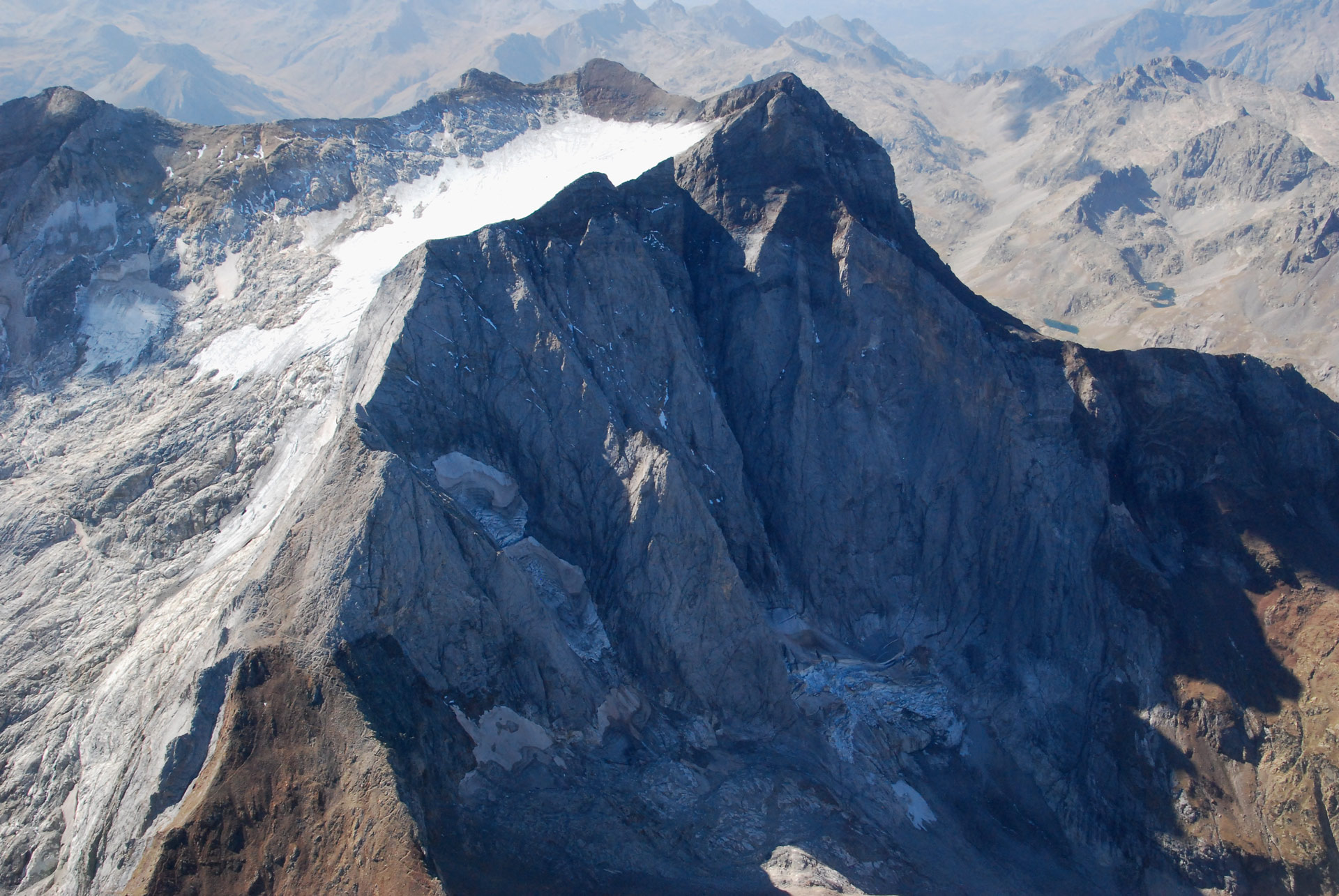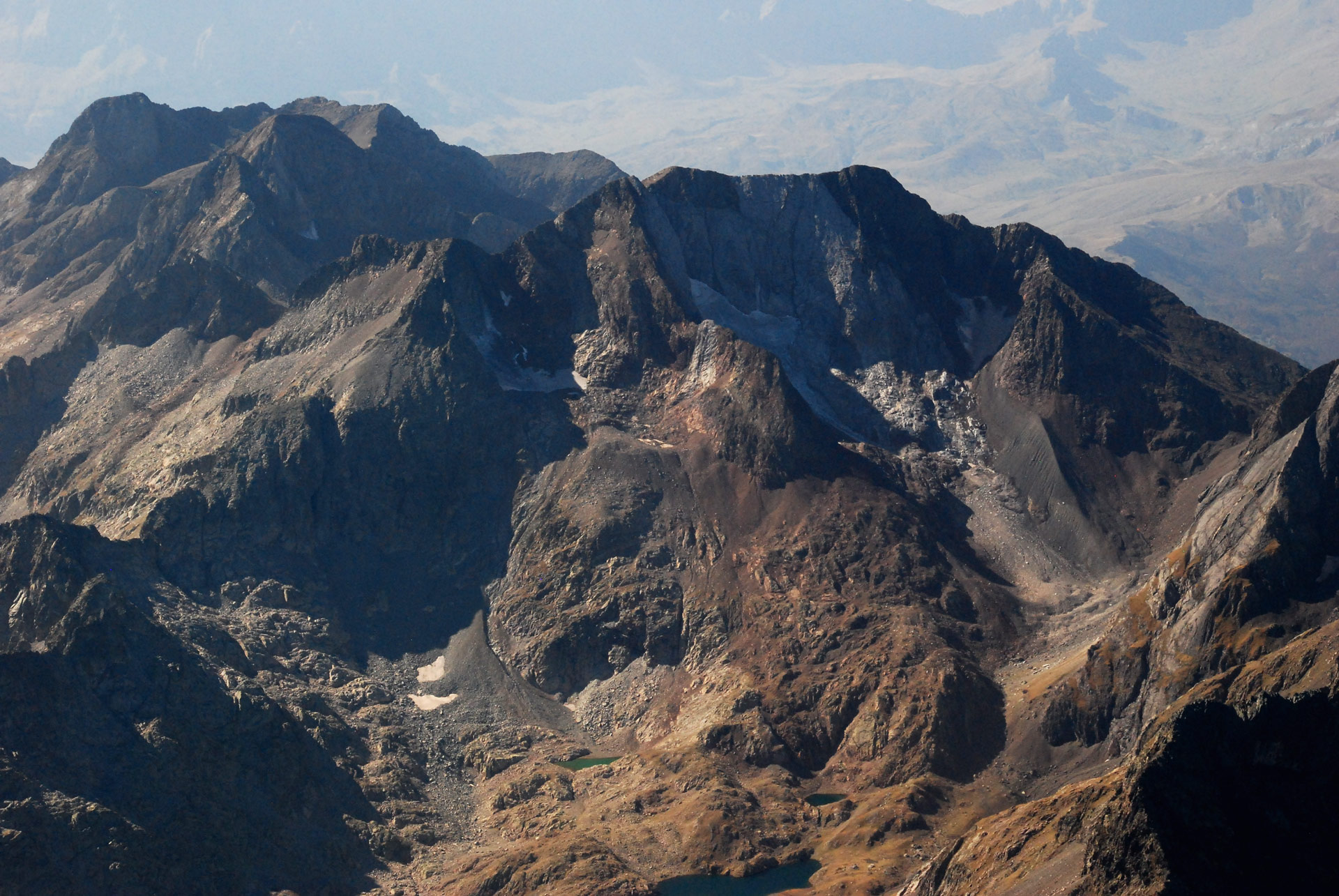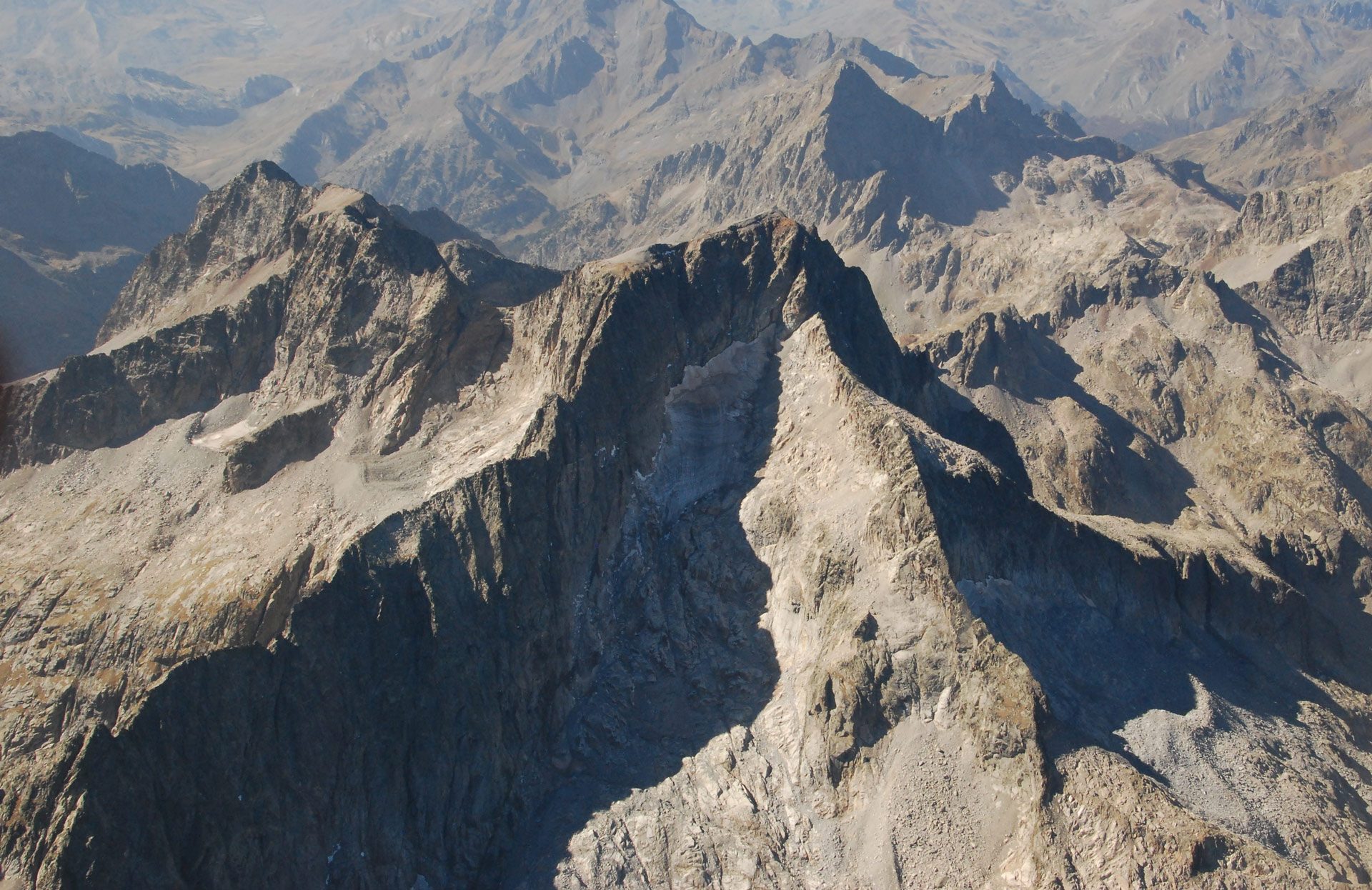The Perdiguero Massif, together with the Gourgs Blancs, Claravide and Lézat sectors, has around 40 peaks over 3,000 metres high, forming the borderline between Spain and France. Its morphology and altitude made it possible during the Little Ice Age to concentrate 426.4 ha of ice (18% of the Pyrenean ice) in this massif, making it the second massif with the greatest glacial extension of the whole chain, surpassed only by Aneto-Maladeta.
The peaks of Perdiguero (3,222 m), Maupás (3,109 m), Crabioules (3,116 m), Seil de la Baquo (3,103 m) and Gourgs Blancs (3,129 m) are some of the most outstanding. All of them are named after some of the glaciers that surround them.
Although it may seem incredible given the current conditions, the massif was home to 4 of the 15 largest glaciers in the Pyrenees. The joint glacier of the Portillon d’Oô (35th), Seil de la Baquo Est (36th) and Oô Ouest (37th), ranked 3rd. Crabioules (30, 31 and 32) was 6th. That of Gourgs Blancs (38) was 12th, and that of Boum-Mail Barrat (27 and 28) was 14th.
At the beginning of the 1980s, 20 devices were inventoried, 11 of them classified as glaciers and the other 9 as ice fields, representing the largest group of the 12 Pyrenean massifs with glacial ice. The French slope was home to 13 of them and the remaining 7 were in the Aragonese valleys of Literola, Remuñé and Estós.
In the four decades since then, 14 of the inventoried devices have become extinct, the Seil de la Baquo East glacier being the only one to maintain its glacier status. Today, all the remaining glaciers and glaciers of this massif are in French territory. The last remaining glacier ice on the Spanish side became extinct in 2022. It is estimated that the current glacier ice extent of this massif is 7.1 ha, which represents a 98.3% reduction since the end of the Little Ice Age. This massif now occupies 5th place in terms of ice extent among the Pyrenean massifs as a whole.
The location of the remaining glaciers and the locations of the extinct glaciers are located in the most protected areas of the massif.
426,4ha
Extension of the glacier during the Little Ice Age
It was the second largest mass with glaciers in the Pyrenees, accounting for almost 18% of the total in the range.
98,3%
Reduction of glacier surface area
Since the Little Ice Age, the massif has lost 98.3% of its ice, currently leaving only 7.1 ha.
Location of the Perdiguero Massif. (Jordi Camins – Marta Espinalt - 2009)
Picos de Perdiguero (1), Remuñé (2), Mail Barrat (3), Boom (4), Maupás (5), Tousse de Remuñé (6), Crabioules (7), Lézat (8), Gran Quayrat (9), Portillón de Oô (14), Seil de la Baquo (15), Western Cap de la Baquo (16), Gourgs Blancs (17).
Glaciers: North of Pico Remuñé (19), Perdiguero (24), Graoués (26), Mail Barrat (27), Boum (28), East Maupás (29), West Maupás (30), Crabioules East (31), Crabioules Central (32), Crabioules West (33), Gan Quayrat-Lézat (34), Portillón de Oô (35), Seil de la Baquo East (36), Seil de la Baquo West (37) and Gourgs Blancs (38).

Location of the Perdiguero Massif. (Jordi Camins - 2003)
The references in the previous image are valid and the following are incorporated: Collado Inferior (10) and Superior (12) de Literola, Pico Royo (11), Valle de Literola (18-1), Valle de Remuñé (18-2).
Glacial features: Southeast Malpás (20), Southwest Malpás (21) and Literola (23).
Not visible in the location images are the glacial features (22) Tusse de Remuñé (see photos 132 and 133), and (25) Molseret (see photo 148).
